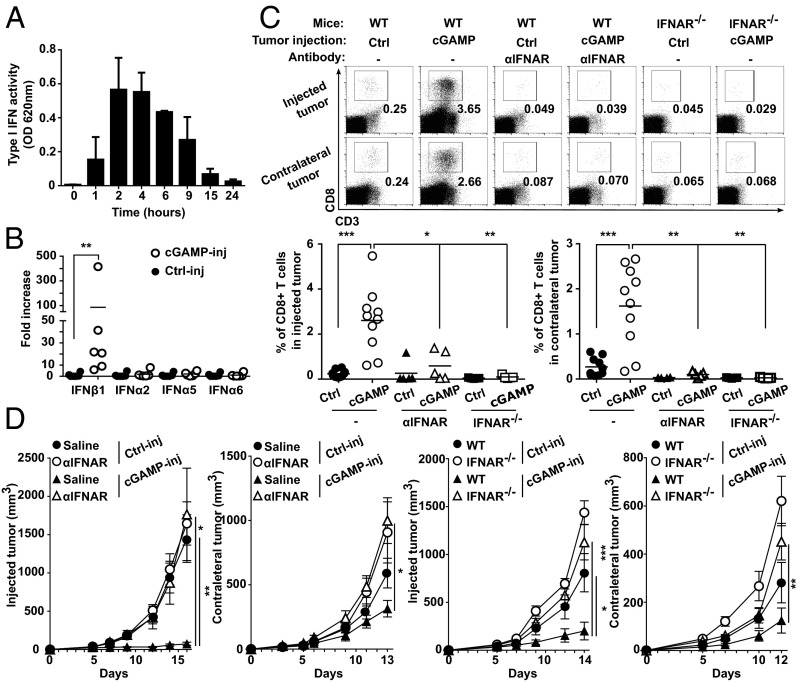Fig. 3.
Intratumoral cGAMP induces expression of IFN-β that drives local and systemic antitumor immunity. (A and B) Mice bearing 5-d established s.c. B16F10 tumors were treated by i.t. injection of cGAMP (cGAMP-inj) or Lipofectamine alone (Ctrl-inj). Depicted are: (A) Type I IFN activity in tumor extracts at the indicated time after treatment. (B) Ifn-β1, Ifn-α2, Ifn-α5, and Ifn-α6 mRNA expression in tumors 4 h after treatment. Each symbol represents an independent mouse, **P < 0.001 by unpaired t test. (C and D) B16F10 cells were implanted s.c. into opposite flanks of WT or IFNAR−/− mice followed by i.t. injection of cGAMP (cGAMP-inj) or Lipofectamine alone (Ctrl-inj) in only one tumor. WT mice were also treated with a neutralizing αIFNAR antibody. Depicted are: (C) CD3+CD8+ T cells infiltrating tumors at day 15 postengraftment, measured by flow cytometry of tumor single cell suspensions. Representative plots are given (Upper); each symbol represents an independent mouse (Lower). *P < 0.05, **P < 0.01, ***P < 0.001, ****P < 0.0001 by unpaired t test. (D) Tumor growth over time of injected and contralateral tumors. Data are given as the mean tumor volume ± SEM with n = 5, representative of two independent experiments, *P < 0.05, **P < 0.01, ***P < 0.001 by two-way ANOVA.

